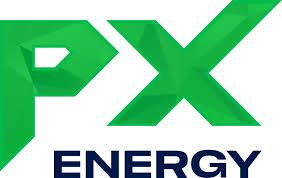Coca-Cola Beats Estimates, Raises Full-Year Outlook

On Wednesday, Coca-Cola pleasantly surprised investors by raising its full-year outlook after reporting earnings and revenue that surpassed Wall Street estimates. CEO James Quincey attributed the positive results to eased supply chain pressures, diminished concerns surrounding the banking sector, and a pullback in energy prices from record highs.
However, he also cautioned, highlighting that some customers opt for cheaper private-label drinks, and certain commodities like sugar and corn syrup continue to exert pressure on the company's profit margins. Despite these challenges, Coca-Cola's shares closed up more than 1% on the day.
According to the company's report, adjusted earnings per share came in at 78 cents, beating the expected 72 cents. Similarly, revenue reached $11.97 billion, surpassing the expected $11.75 billion. Coca-Cola's second-quarter net income attributable to shareholders amounted to $2.55 billion, or 59 cents per share, showing growth compared to the previous year's $1.91 billion, or 44 cents per share.
The company's organic revenue, which excludes the impact of acquisitions and divestitures, witnessed an impressive 11% increase in the quarter, primarily driven by higher prices. Following its rival PepsiCo's footsteps, Coca-Cola provided an optimistic outlook for the remainder of the year.
The company now expects comparable adjusted earnings per share growth of 5% to 6% for 2023, up from the previous forecast of 4% to 5%. Additionally, Coca-Cola hiked its outlook for organic revenue, now predicting an increase of 8% to 9%, compared to the earlier range of 7% to 8%.
Coca-Cola's decision to raise product prices was in response to higher commodity costs, a trend many food and beverage companies have adopted. Although its pricing strategy has not faced significant backlash from customers, there have been signs of shifts in consumer preferences. Some consumers in Europe and the U.S. have switched to private-label bottled water and juices.
CEO James Quincey assured investors that further price hikes are not expected in either region. He explained, "In these markets, pricing is largely in place, and it's expected to moderate as we cycle pricing initiatives from the prior year." Despite facing challenges in the U.S. market, where its volume fell by 1%, Coca-Cola witnessed bright spots in certain divisions.
For instance, Coke Zero Sugar saw a 5% increase in volume, driven by solid demand in North America and Latin America. The Ultra-filtered milk brand Fairlife and the coffee division also reported volume growth of 5%, fueled by reliable performance in the United Kingdom and China.
Coca-Cola's second-quarter earnings report reflected a positive trend, with revenue and earnings surpassing expectations. The company's strategic pricing initiatives and optimistic outlook for the rest of the year indicate confidence in its ability to navigate challenges posed by commodity costs and changing consumer preferences.
Business News
From Zero to Certified: The Journey Behind Every Home System Expert
When Expenses Get Creative: Survey Exposes Bizarre Claims
Electronic Wills and Testamentary Freedom: Inside the Wills Bill 2025
Splat App Transforms Photos Into Coloring Pages Using AI
U.S. Tech Giants Warn Visa-Holding Employees to Avoid International Travel Due to Processing Delays




















